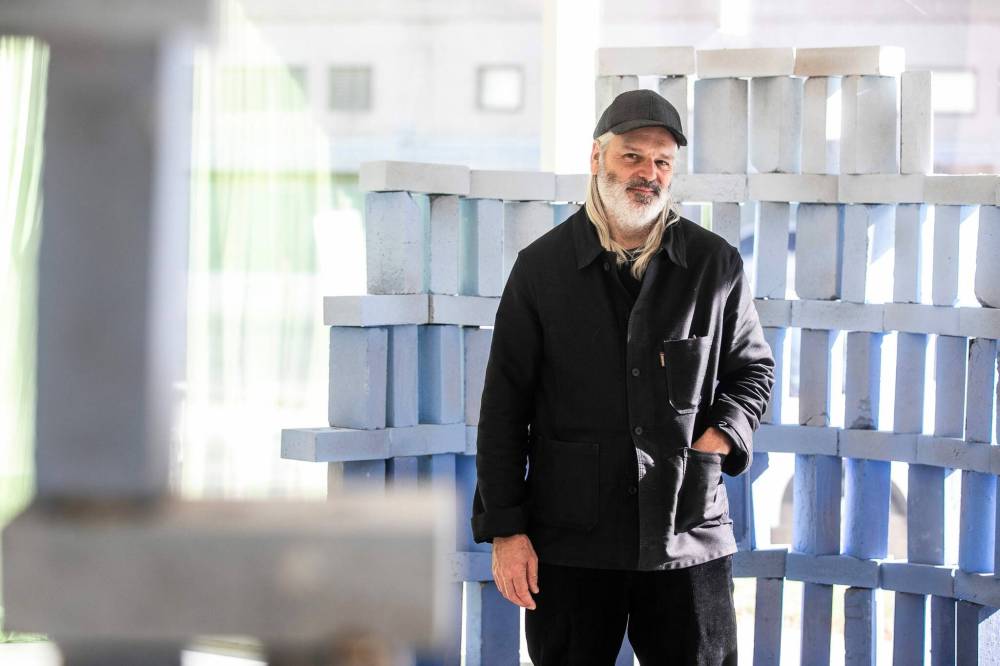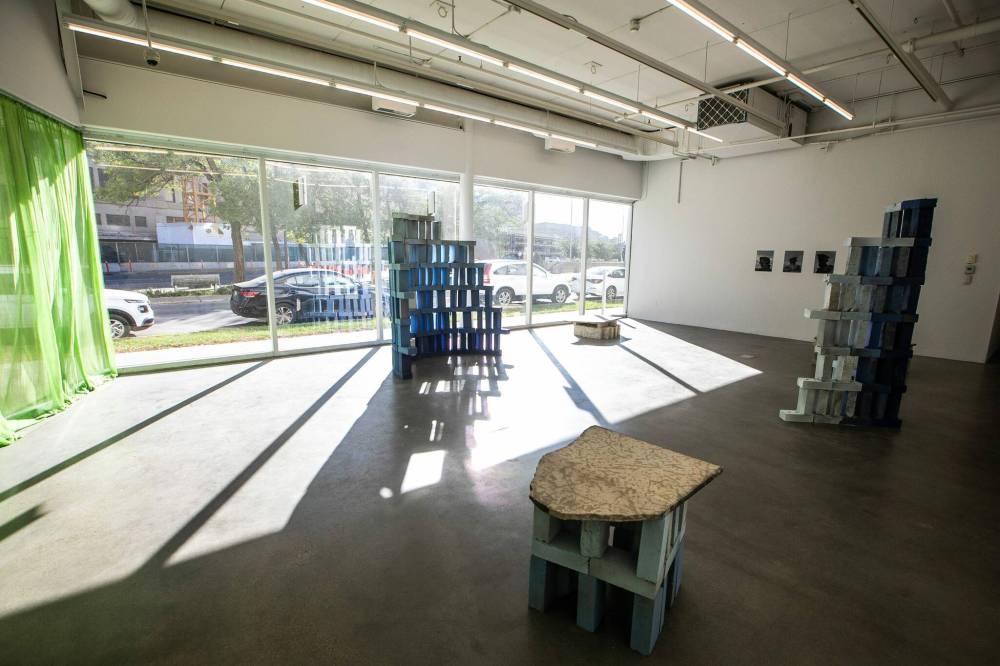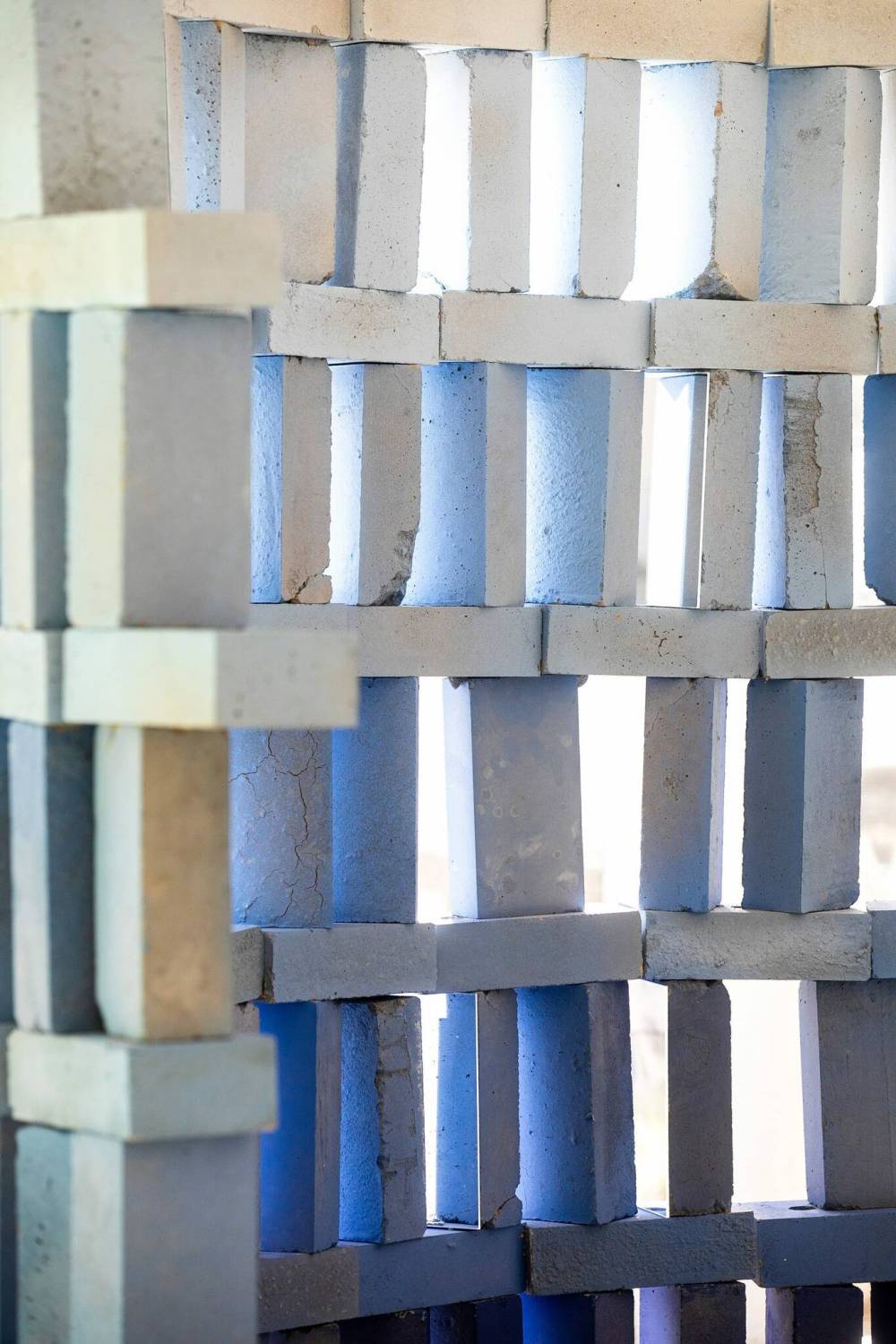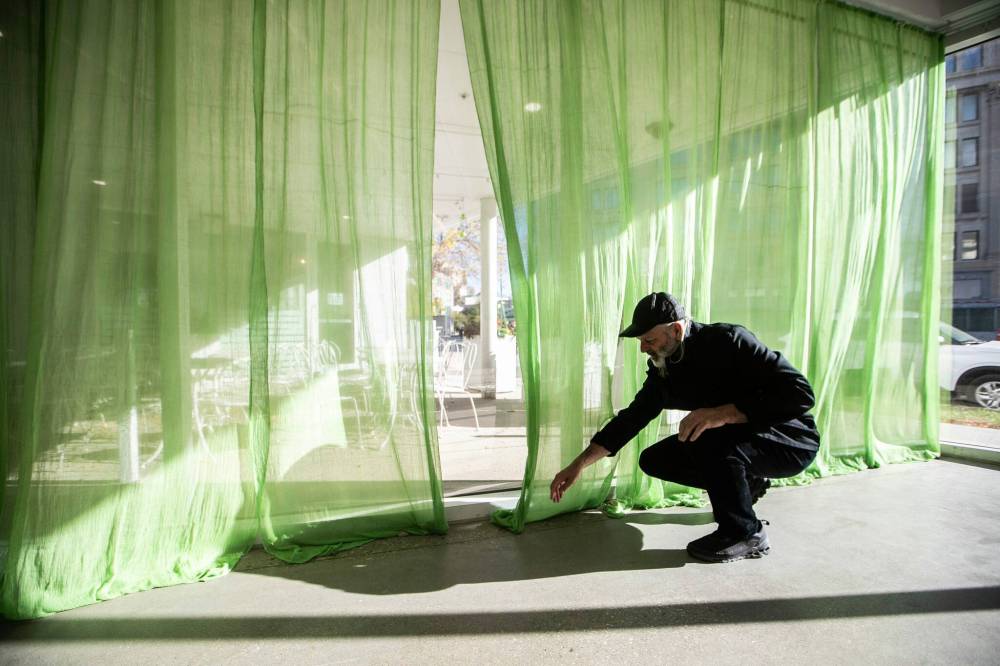Plug In ICA’s sculptural exhibition ‘Betonwaves’ pieced together brick by brick
Advertisement
Read this article for free:
or
Already have an account? Log in here »
To continue reading, please subscribe:
Monthly Digital Subscription
$0 for the first 4 weeks*
- Enjoy unlimited reading on winnipegfreepress.com
- Read the E-Edition, our digital replica newspaper
- Access News Break, our award-winning app
- Play interactive puzzles
*No charge for 4 weeks then price increases to the regular rate of $19.00 plus GST every four weeks. Offer available to new and qualified returning subscribers only. Cancel any time.
Monthly Digital Subscription
$4.75/week*
- Enjoy unlimited reading on winnipegfreepress.com
- Read the E-Edition, our digital replica newspaper
- Access News Break, our award-winning app
- Play interactive puzzles
*Billed as $19 plus GST every four weeks. Cancel any time.
To continue reading, please subscribe:
Add Free Press access to your Brandon Sun subscription for only an additional
$1 for the first 4 weeks*
*Your next subscription payment will increase by $1.00 and you will be charged $16.99 plus GST for four weeks. After four weeks, your payment will increase to $23.99 plus GST every four weeks.
Read unlimited articles for free today:
or
Already have an account? Log in here »
The sculptural works in Louise Witthöft and Rodney LaTourelle’s Betonwaves, on view now at Plug In ICA, could be ancient ruins. Or forms found in nature. They also could be walls and furniture.
Either way, they want you to think about where you are and the materials that surround you.
LaTourelle, who is from Winnipeg originally and has been based in Berlin for the past 20 years, and Witthöft are an artist duo known for their large-scale, site-specific installations that transform materials commonly used in infrastructure into art more concerned with people and the environment.
MIKAELA MACKENZIE / FREE PRESS Artist Rodney LaTourelle creates art using geopolymer cement, a low-carbon alternative to traditional Portland cement.
LaTourelle, who in 2023 was a researcher-in-residence at the University of Manitoba’s Centre for Architectural Structures and Technology, has a particular interest in working with cement — specifically geopolymer cement, a low-carbon alternative from the traditional Portland cement responsible for approximately eight per cent of global C02 emissions.
Betonwaves began in 2022 when LaTourelle was doing a residency with Mitkunstzentrale at the Haus der Statistik, a late-1960s constructed building in East Berlin once occupied by the Stasi, or the secret police of East Germany.
LaTourelle made sculptural works, inspired by designs by East German artist Egon Wrobel, using concrete aggregate salvaged from renovations to the Haus der Statistik mixed with geopolymer cement.
The material itself became an artistic statement referencing past, present and future, LaTourelle says.
LaTourelle wanted to do an iteration of the project in Winnipeg, again working with local conditions and recycled concrete. He knew the Hudson’s Bay Company building in downtown Winnipeg was going through a transformation after its history-making turnover to the Southern Chiefs’ Organization.
MIKAELA MACKENZIE / FREE PRESS Betonwaves features recycled concrete to construct something new.
“That’s a huge symbolic situation in terms of the sociopolitical history of this place, especially,” he says, pointing out that Plug In’s proximity to the building also made it an ideal space to host Betonwaves.
“We’re dealing with the physical history and the political history at the same time through the material.”
MIKAELA MACKENZIE / FREE PRESS Betonwaves uses recycled concrete to construct something new.
The bricks that compose the works on view at Plug In are not bricks from the HBC building, though they might look like they could be. As with the German iteration of the project, LaTourelle combined the recycled crushed rocks and sand from the HBC building with geopolymer cement and then poured that mixture into brick-shaped moulds. (Other works use Tyndall stone, not from the HBC building itself, but from the same quarry.)
“It’s an experimental process. The bricks aren’t perfect,” he says.
They are also twice as heavy as a regular brick, some are missing corners and some are cracked — but that just gives them a worn character. The bricks are painted in a gradient of cobalt blue, which references a painting of morning glories by his grandmother — also included in the exhibition — but also makes the resulting sculptural works look like natural ice formations you might find near the real Hudson’s Bay.
“Brick is kind of symbolic. It’s an element that, when you put it together, becomes structural,” he says.
MIKAELA MACKENZIE / FREE PRESS Rodney LaTourelle sets up Betonwaves at Plug In.
There’s the building of things — brick by brick — but also the dismantling of things, which LaTourelle is also interested in. That might mean actual structures themselves, yes, but also old ways of thinking, doing and creating.
“Also, thinking about the deconstruction and construction of this building, symbolically, in a post-colonial context,” he says.
“It’s a kind of ruin, but it’s being transformed.”
Betonwaves is on view until Nov. 1.
jen.zoratti@freepress.mb.ca

Jen Zoratti is a columnist and feature writer working in the Arts & Life department, as well as the author of the weekly newsletter NEXT. A National Newspaper Award finalist for arts and entertainment writing, Jen is a graduate of the Creative Communications program at RRC Polytech and was a music writer before joining the Free Press in 2013. Read more about Jen.
Every piece of reporting Jen produces is reviewed by an editing team before it is posted online or published in print – part of the Free Press‘s tradition, since 1872, of producing reliable independent journalism. Read more about Free Press’s history and mandate, and learn how our newsroom operates.
Our newsroom depends on a growing audience of readers to power our journalism. If you are not a paid reader, please consider becoming a subscriber.
Our newsroom depends on its audience of readers to power our journalism. Thank you for your support.

